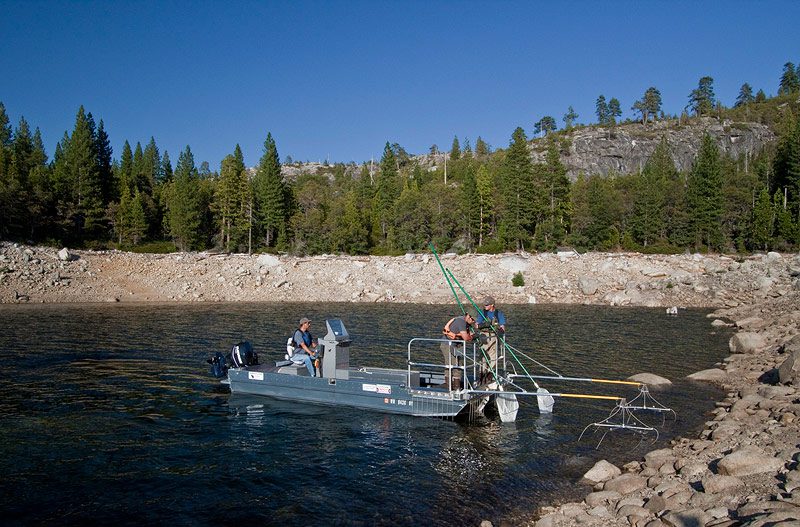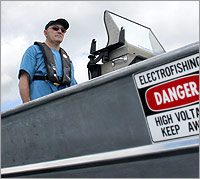Wednesday July 6, 2011

If you’ve been following our blog posts over the years then you know we have done our share of electrofishing. With the right study design and procedures electrofishing can be an effective means of evaluating fish composition and abundance. For example, sampling equipment such as traps and seine nets are designed to capture a certain size or type of fish, and sampling with these gear will only provide data on part of the fish community. By employing standardized assessment methodology such as grid point or continuous electrofishing, fish in the sampling area will generally have a similar chance of being captured and the data will be more robust. We are currently utilizing electrofishing, as well as other methods, to evaluate fish abundance and community structure on the lower Sacramento River at sites where the U.S. Army Corps of Engineers has repaired levees. A key objective in the study is to identify features of levee repair sites that maximize fish use and provide the greatest value to listed species.

We are excited to announce the addition of Dr. Michael (Mike) Holliman, Senior Research Biologist and internationally recognized electrofishing expert to our team. Mike is perhaps the only scientist in North America with a PhD in electrofishing theory and principles, and has extensive experience using electromagnetic resonance imaging and x-ray technology for assessing potential fish injuries from electric fields during electrofishing surveys. He brings advanced quantitative expertise, electofishing theory and management skills to our growing staff.
